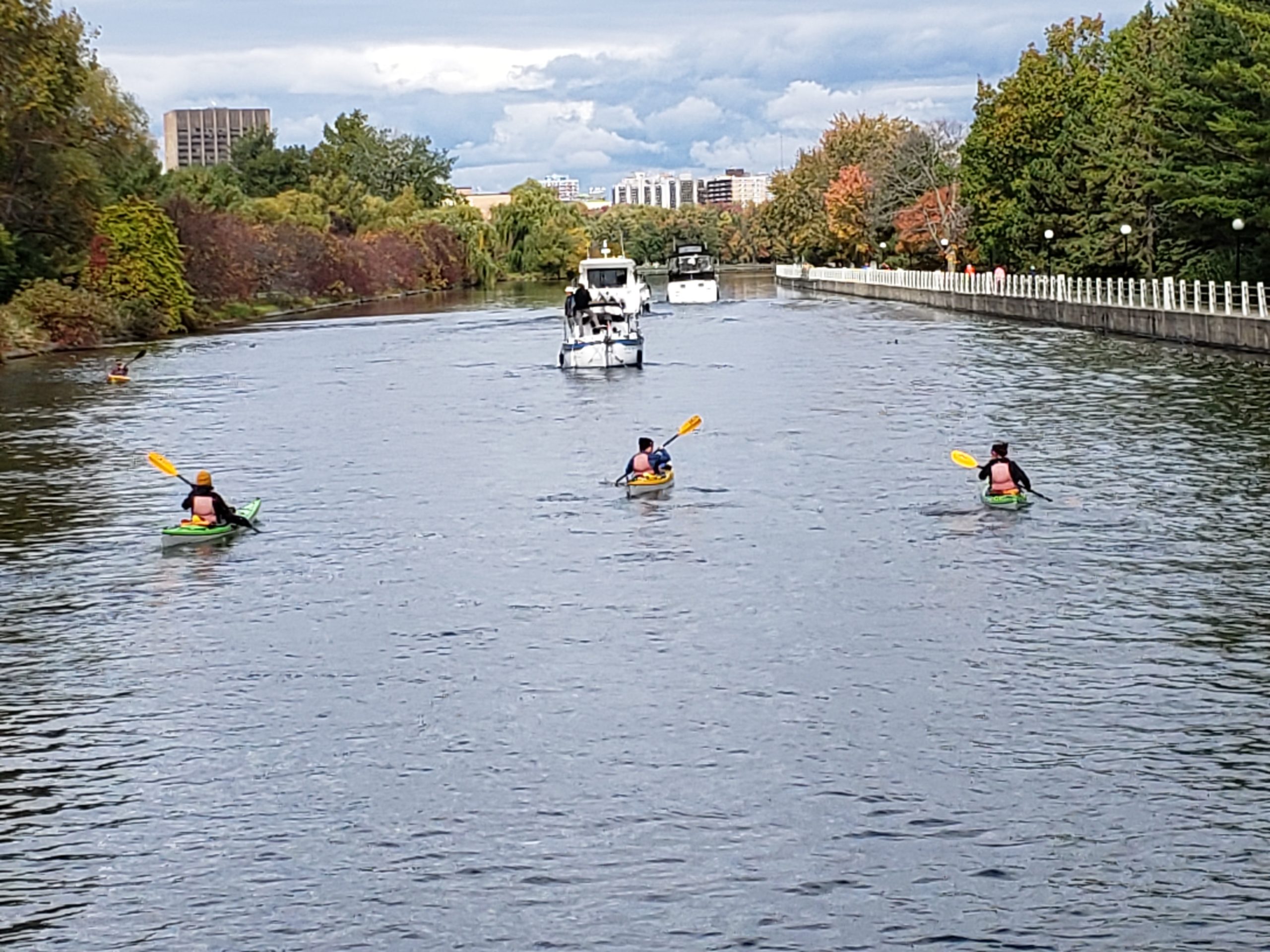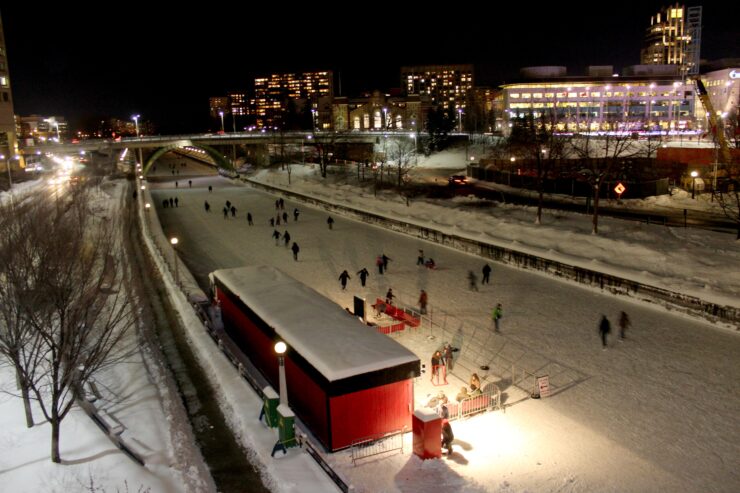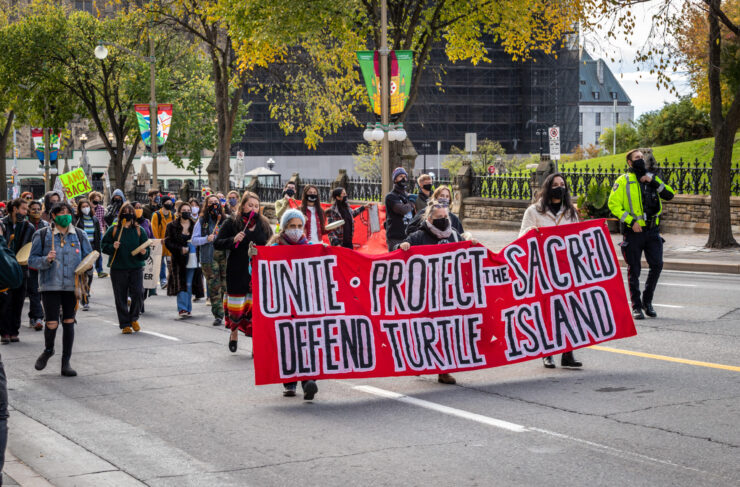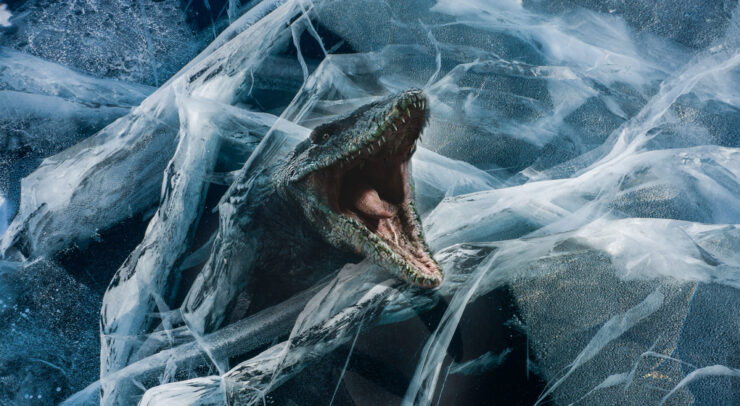The women are youth ambassadors under the national Ocean Bridge program bridging traditional Indigenous and colonial science expertise
Local paddlers Anika Smithson, Monika Szpytko along with Burlington’s Danika Guppy can finally get rid of their sea legs after completing their week-long kayak of the Rideau Canal, ending at Ottawa’s Hartwell Locks with a shoreline cleanup on Saturday, Oct 3.
The trio decided to embark on the 202 kilometre journey, averaging 25 km a day, to promote waterway and ocean conservation. Starting in Kingston on Sept. 26, they paddled through Perth and Smiths Falls and engaged with locals through discussions, local history and activities.
“Especially since COVID-19 and living and working from home, I felt this need to get out and reconnect with nature,” said Szyptko, a 29-year-old Carleton University graduate in public administration living in Ottawa. “More than a photo with a drink in hand, but really down to earth and observing nature.”
All the paddlers are a part of the national Ocean Bridge mentorship and network program for youth ages 18 to 30. Under the international Ocean Wise Conservation Association, this program gives the opportunity for youth and experts to connect with the shared interest of making a difference in their communities through ocean and waterway conservation.
“In my late twenties and working in government research, I’ve been looking for ways to better identify what my skills and interests and how that best matches my strengths and how to best contribute,” Szpytko said. “As well as the opportunity to connect with like-minded people, I would really like my work in the long-run focus on environmental sustainability.”
She said she was drawn to the Ocean Bridge’ cross-disciplinary support for creative and innovative ideas. After seeing a call-out from Smithson for an educational campaign kayaking trip, Szpytko decided she was up for the challenge and by the end of it, she was shocked after learning what her body is capable of, having paddled around 25 kilometres per day.
“To solve sustainability issues and complex problems, you really need to engage people from different mindsets,” she said.
Like Szpytko, Smithson feels the same way about interacting within the community and used funding from Taking It Global’s Rising Youth initiative and the Canadian Service Corps to help support the logistical side of the extra-long educational trip. The money went on to assist with kayak rentals and food as well as garbage bags and personal protective equipment for the clean ups.
“I love paddling and the Rideau Canal is such a big part of this area,” said the 27-year-old Carleton University earth sciences graduate.
“It’s nice to feel part of a supportive community,” she said. “So often people have these great ideas but the money issue holds them back to acting on those dreams.”
“You don’t have to go to a wilderness area, conservation can be done in your own backyard. Garbage cleanup and recycling are very easy and they do make a difference,” she said.
The three women along with the call-out for community members collected a total of eight large bags of loose garbage, six of which were just from Ottawa. They have partnered and shared their collected garbage data with the Great Canadian Shoreline Cleanup to better understand the environmental impacts.
“In terms of raising awareness and conservation, I’ve learned that there are a lot of people who care and want to help but not really sure how.”
Beyond the physical workout, Smithson said the trip has motivated her to help raise awareness and fill educational gaps around conservation literacy.
“I’ve learned that the ocean is such a big factor in everyone’s lives,” she said. “It can be outside, out of mind, but people don’t realize the effects it has on them.”
“Impacts are magnified … for people who make their livelihood from waterways and effect on their quality of life even if we don’t see it ourselves.”
Between her education and experience with the Ocean Bridge program, Smithson said she has been motivated to acknowledge and learn more about Indigenous history in Canada. Her social media page A Rising Tide incorporates educational posts for people to learn more about this topic.
“I use the information that I’ve learned to sort of bring that extra perspective and keep that knowledge in the back of my mind,” she said. For this particular trip, she created a post about the Rideau Canal and the region’s pre-colonial history.
During the trip that we just did, a lot of the research and a lot of the information is just like the Rideau Canal. [When] it started, when it was built and then there’s all this information about how it was used and what it’s used for now at least for now. So I was like ‘Okay, well, it’s not always been a canal. What was it before? People have been living on this land for thousands of years…[so I looked for] the history before the canal.”
“People still live on this land … they’re not gone, they’re not erased, they’re still here.”
Smithson believes that as an ambassador she has not only discovered how important ocean and waterway conservation is but how everyone can proactively participate in protecting their local waterways.
“I’ve learned as an ambassador and meeting other people part of the program that ocean and waterway conservation takes on many forms and there is no right or wrong way to go about it, and everyone has valuable ideas to help tackle different parts of the issue but they are all working towards the same goal.”
“I’ve learned that you can make a difference with your own ideas and connecting with other people,” she adds. “It is possible. In your own part of your world, you can make a difference.”
Editor’s Note (17/10/20, 10:00 p.m.): Monika Szpytko’s last name was misspelled in a previous version of this article.





